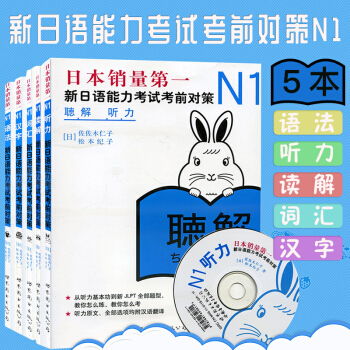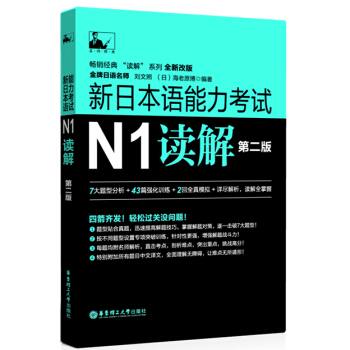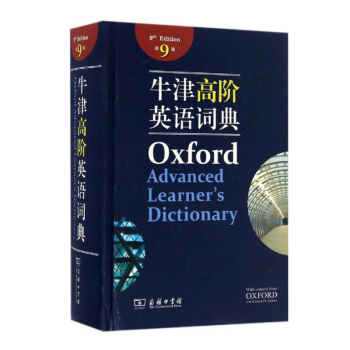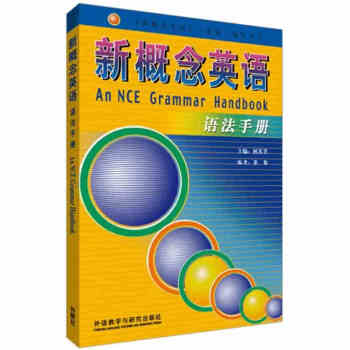![英语教师职业发展前沿论丛·实用英语教学法:口语篇 [Practical English Language Teaching:Speaking]](https://pic.tinynews.org/11169630/rBEQWVEKFtUIAAAAAAjkqYkYcgIAAAbLwIUtPwACOTB071.jpg)

具体描述
内容简介
《英语教师职业发展前沿论丛·实用英语教学法:口语篇》意在为在职英语教师或有意从事英语教学的人士编写。无论这些人之前是否接受过英语作为第二语言教学的正规指导,均能从《英语教师职业发展前沿论丛·实用英语教学法:口语篇》中受益。《英语教师职业发展前沿论丛·实用英语教学法:口语篇》特色:1、编写思路清晰,全面介绍了英语口语教学的基础理论和研究方法。2、针对不同水平学生的特性,提供了完整而详尽的初级、中级、高级英语口语及发音教学的实用技巧及评估方法。3、书中提供的思考题及练习题帮助学生深入理解教学重点,并使学生能够很好地在英语口语及发音教学实践中应用所学的知识。4、单独设立一个章节,针对大班教学及学生水平不一的情况,给出解决方法。5、每章后均精心选择出扩展阅读书目及网络资源目录,使读者得到最新英语口语教学资讯。6、附录中的词汇表对于英语口语教学中的核心词汇给出了重点突出、简洁易懂的定义。
内页插图
目录
丛书总序(王守仁)中文导读(郭海云)
Acknowledgements
Foreword
Chapter One What is speaking?
1.Introduction
2.What is speaking?
3.Approaches to speaking
4.Speaking in action
5.Teaching speaking
6.Assessing speaking
7.Conclusion
Further Readings
Helpful Website
References
Chapter Two Speaking for beginning level learners
1.Introduction
2.Syllabus design issues
3.Principles for teaching speaking to beginning learners
4.Tasks and materials
5.Teaching pronunciation
6.Speaking in the classroom
7.Assessing beginning learners
8.Conclusion
Further Readings
Helpful Websites
References
Chapter Three Speaking for intermediate level learners
1.Introduction
2.Syllabus design issues
3.Principles for teaching speaking to intermediate learners
4.Tasks and materials
5.Teaching pronunciation
6.Speaking in the intermediate classroom
7.Assessing intermediate learners
8.Conclusion
Further Readings
Helpful Websites
References
Answer key
Chapter Four Speaking for advanced level learners
1.Introduction
2.Syllabus design issues
3.Principles for teaching speaking to advanced learners
4.Tasks and materials
5.Teaching pronunciation
6.Speaking in the classroom
7.Assessing advanced learners
8.Conclusion
Further Readings
Helpful Website
References
Chapter Five Key issues in teaching speaking
1.Introduction
2.Students' first-language use in the English speaking class
3.Reticence and dominance in speaking activities
4.Learning styles in the speaking class
5.Responding to oral errors
6.Speaking activities in large classes
7.Multi-Ievel speaking classes
8.Technology and teaching speaking
9.Conclusion
Further Readings
Helpful Websites
References
Glossary
精彩书摘
Buddy always pulled up a chair to watch his father wash and shave. He saw him spread the hot lather with a wet, yellow brush and then zip off the whiskers with a cheap razor that looked just like tin to him. Buddy would wait to see if the thin blade cut his father's face, yet it never did. Sometimes his father would even sing in his gravely voice as he pulled the sharp razor across his skin. Once Buddy thought he spotted blood and was thrilled. But later he felt bad because he was sure it was a sin to have these thoughts.Galvan, Pierce, and Underwood, 1976, p. 20
When you use a passage like this to assess a learner's pronunciation, the learner reads the passage aloud into a tape recorder. Later you can score the reading by marking a clean copy of the passage for each student, circling the phonemes that were mispronounced. If you print the passage in a double-spaced format, you can write in the sounds the learner substituted for the English phonemes. This information will show you some ways to help the students improve their pronunciation.
There are some points to keep in mind, however, if you use read-aloud passages as testing texts. First, if what you wish to assess is the learners' pronunciation, then the text itself should not be demanding, relative to the learners' proficiency, in terms of the vocabulary or syntactic structures it involves. You should answer the students' questions about word meanings and pronunciation of any new words before they read the passage on tape, because the text is meant to be a test of accentedness-not of reading skills. Also, be aware that people can sometimes be more conscientious about their pronunciation accuracy when they are reading aloud than when they are trying to generate novel utterances of their own.
Write a brief paragraph that incorporates the vowel and consonants sounds of English that pose particular problems for your learners, if you are already teaching (or for those students you hope to work with in the future, if you are not). The text should sound natural and should include only words and grammatical structures that your learners are likely to know. (This is a pronunciation task-not a test of reading or of how students interpret new words in context.) Type the text in double-spaced format so it will be easier for the learners to read (and for you to mark later) than if it were single-spaced. Have a few of your colleagues or classmates read it aloud for you on tape before you try using it with students.
……
前言/序言
用户评价
我最近在尝试将项目式学习(PBL)引入口语教学模块,但总觉得在评估标准上把握不好分寸——如何在确保学生口语流利度的同时,又能公正地衡量他们的批判性思维和问题解决能力?这本书如果能触及到这种跨学科、重能力的教学模式下的口语评估体系构建,那将对我目前的困境有极大的启发。我关注的不是如何设计一个基础的“五分钟演讲”,而是如何设计一个需要持续数周、集研究、协作和公开展示于一体的口语项目,并为这个项目的口语产出制定出清晰、可操作的评价量规(Rubrics)。一个好的口语教学法,绝不应该只停留在纠正语法错误,更应该致力于培养学生在真实压力下(比如临场应变、听众互动)的心理素质和语言的灵活运用能力。我期望看到书中能提供一些关于“高风险口语表现”的教学策略,比如如何通过设计“低风险”的预演和反馈循环,最终帮助学生自信地站上“高风险”的舞台。
评分我一直坚信,好的口语教学法,最终的落脚点是文化的理解与跨文化的交际能力。单纯的语音语调模仿,只能造出“会说话的机器人”,而无法培养出真正的“交际者”。这本书既然提到了“前沿”,我非常希望能看到它如何将文化教学元素有机地融入到口语训练之中,尤其是在处理那些涉及文化敏感性的对话场景时。例如,如何教导学生在跨文化交流中识别并恰当地回应幽默、讽刺,或者如何表达不同文化背景下的拒绝和赞美,这些都是教科书上往往被忽略,但在实际交流中却至关重要的“软技能”。我期待这本书能提供一些基于真实文化冲突案例的口语情境模拟训练,引导教师如何引导学生进行“文化解码”。如果它能提供一套系统的方法论,帮助我们从“教语言”跨越到“教使用语言的文化智慧”,那么这本书的价值就远远超出了纯粹的教学技术层面,而是上升到了培养具有全球视野的语言使用者的层面,这对我来说,是评价一本教学法著作的最高标准。
评分说实话,我买这本书之前,心里是有些忐忑的。市面上太多打着“实用”旗号的教材,结果翻开来就是各种过时的、脱离实际情境的对话示例,看得人直犯尴尬癌。我追求的是那种能够真正提升学生“用英语有效沟通”能力的技巧,而不是仅仅让他们背诵标准答案。我特别关注的是,作者是如何处理“语篇连贯性”和“语用得体性”这两个口语教学的硬骨头的。现在的学生,词汇量不小,但组织语言时常常像散落的珍珠,不成串。这本书若能提供一些结构化的训练模块,比如如何引导学生从意群到篇章层次地组织口语表达,那简直是太棒了。我希望看到的是具体的、带有案例分析的教学设计,而不是抽象的理论框架。比如,针对商务谈判、学术汇报这类高阶口语场景,有没有一些“脚手架式”的教学支架可以搭建起来,帮助中高级学习者跨越从“能说”到“会说”的鸿沟?如果这本书能在这方面给出一些独到的见解和操作指南,那它就不仅仅是一本参考书,更像是一位经验丰富的老搭档在耳边提点迷津。
评分这本书的标题一下子就抓住了我的眼球,作为一名在一线摸爬滚打多年的英语教师,我对“职业发展前沿”这几个字有着近乎本能的敏感。我一直在寻找那种既有理论深度又能立刻在课堂上找到对应实践的宝典,而不是那些空泛地谈论教育理念却不接地气的“大部头”。这本书的定位,让我感觉它可能就是那个“知我者谓我心忧”的同行所作。我尤其期待它在面对当前教学改革浪潮时,能提供一些真正具有前瞻性的视角。比如,AI工具融入口语教学的边界在哪里?如何设计出真正能激发学生“想说”而不是“被迫说”的活动?传统发音训练与交际能力培养之间,那种微妙的平衡点又该如何拿捏?我希望能看到作者如何巧妙地拆解这些行业痛点,并给出切实可行的、可复制的解决方案。毕竟,理论再美,也得在八十人的大班课上落地生根,开出花来,这才算本事。所以,我这次是带着“寻宝”的心态来翻阅它的,希望能从中汲取到足以支撑我未来三年教学方向的新思路和新方法。
评分从一个资深教师的角度看,我们最大的挑战之一是面对学生差异化学习的需求。班级里总有那些“学霸”级别的,他们对口语提升的需求已经不再是基础的准确性,而是追求风格和地道的表达;而另一些学生可能还在为组织一句完整、无明显错误的句子而挣扎。这本书如果能探讨如何设计出具有弹性和分层性的口语教学活动,那就太有价值了。我希望看到的是“一课多用”的教学法设计思路,即一套核心任务如何通过调整难度、增加或减少支持性材料,来满足不同水平学习者的需求。比如,对于基础薄弱的学生,是否有专门针对“信息补充”和“观点阐述”的“微技能”训练包?而对于进阶学生,作者是否会引导他们去分析母语者在特定语境下的“言外之意”和“潜台词”?这种兼顾广度和深度的教学理念,才能真正体现出“前沿”二字的重量,让每一位教师都能在书中找到适合自己班级的“药方”。
评分对我写论文有用、感谢,,,,
评分英语教师职业发展前沿论丛·实用英语教学法:口语篇》意在为在职英语教师或有意从事英语教学的人士编写。无论这些人之前是否接受过英语作为第二语言教学的正规指导,均能从《英语教师职业发展前沿论丛·实用英语教学法:口语篇》中受益。英语教师职业发展前沿论丛·实用英语教学法:口语篇》意在为在职英语教师或有意从事英语教学的人士编写。无论这些人之前是否接受过英语作为第二语言教学的正规指导,均能从《英语教师职业发展前沿论丛·实用英语教学法:口语篇》中受益。英语教师职业发展前沿论丛·实用英语教学法:口语篇》意在为在职英语教师或有意从事英语教学的人士编写。无论这些人之前是否接受过英语作为第二语言教学的正规指导,均能从《英语教师职业发展前沿论丛·实用英语教学法:口语篇》中受益。英语教师职业发展前沿论丛·实用英语教学法:口语篇》意在为在职英语教师或有意从事英语教学的人士编写。无论这些人之前是否接受过英语作为第二语言教学的正规指导,均能从《英语教师职业发展前沿论丛·实用英语教学法:口语篇》中受益。
评分所有曾经痛彻心扉的离别,也痛不过人生最后的一场离别。到了这一天,从前的那些离别又算什么?有些离开,是为了使我们更好和更优秀地走到生命的终点。
评分英语教师职业发展前沿论丛·实用英语教学法:口语篇》意在为在职英语教师或有意从事英语教学的人士编写。无论这些人之前是否接受过英语作为第二语言教学的正规指导,均能从《英语教师职业发展前沿论丛·实用英语教学法:口语篇》中受益。英语教师职业发展前沿论丛·实用英语教学法:口语篇》意在为在职英语教师或有意从事英语教学的人士编写。无论这些人之前是否接受过英语作为第二语言教学的正规指导,均能从《英语教师职业发展前沿论丛·实用英语教学法:口语篇》中受益。英语教师职业发展前沿论丛·实用英语教学法:口语篇》意在为在职英语教师或有意从事英语教学的人士编写。无论这些人之前是否接受过英语作为第二语言教学的正规指导,均能从《英语教师职业发展前沿论丛·实用英语教学法:口语篇》中受益。英语教师职业发展前沿论丛·实用英语教学法:口语篇》意在为在职英语教师或有意从事英语教学的人士编写。无论这些人之前是否接受过英语作为第二语言教学的正规指导,均能从《英语教师职业发展前沿论丛·实用英语教学法:口语篇》中受益。
评分《英语教师职业发展前沿论丛·实用英语教学法:口语篇》意在为在职英语教师或有意从事英语教学的人士编写。无论这些人之前是否接受过英语作为第二语言教学的正规指导,均能从《英语教师职业发展前沿论丛·实用英语教学法:口语篇》中受益。
评分英语教师职业发展前沿论丛·实用英语教学法:口语篇》意在为在职英语教师或有意从事英语教学的人士编写。无论这些人之前是否接受过英语作为第二语言教学的正规指导,均能从《英语教师职业发展前沿论丛·实用英语教学法:口语篇》中受益。英语教师职业发展前沿论丛·实用英语教学法:口语篇》意在为在职英语教师或有意从事英语教学的人士编写。无论这些人之前是否接受过英语作为第二语言教学的正规指导,均能从《英语教师职业发展前沿论丛·实用英语教学法:口语篇》中受益。英语教师职业发展前沿论丛·实用英语教学法:口语篇》意在为在职英语教师或有意从事英语教学的人士编写。无论这些人之前是否接受过英语作为第二语言教学的正规指导,均能从《英语教师职业发展前沿论丛·实用英语教学法:口语篇》中受益。英语教师职业发展前沿论丛·实用英语教学法:口语篇》意在为在职英语教师或有意从事英语教学的人士编写。无论这些人之前是否接受过英语作为第二语言教学的正规指导,均能从《英语教师职业发展前沿论丛·实用英语教学法:口语篇》中受益。
评分英语教师职业发展前沿论丛·实用英语教学法:口语篇》意在为在职英语教师或有意从事英语教学的人士编写。无论这些人之前是否接受过英语作为第二语言教学的正规指导,均能从《英语教师职业发展前沿论丛·实用英语教学法:口语篇》中受益。
评分物美价廉~ “我只要在搜索框内输入书名、作者,就会有好多书摆在我面前供我挑选,价格方面还可以打折,这样便捷与优惠的购书方式我怎么可能不选择呢!”经常在网上购物的弟弟幸福的告诉我。据调查统计,当前网上书店做得较好的的网站有京东等。现在大街小巷很多人都会互相问候道:“今天你京东了吗?”,因为网络购书已经得到了众多书本爱好者的信任,也越来越流行。基于此,我打开网页,开始在京东狂挑书。书是正版的,之前有过担心滴。内容还行吧,尽管我没觉得有多充实。冲着是名人写的,书的质量还行就不挑剔了。卖家发货挺快的,第二天就收到了。书还是不错的,精装外壳,发货速度真心的快,评价晚了,书不错,应该再早点看的。推荐看,只是粗浅认识了一下,已经感觉到自己逻辑思维更加清晰。好书,受益匪浅,如果不好好研究一下此书,绝对是人生一大遗憾。好了,我现在来说说这本书的观感吧,一个人重要的是找到自己的腔调,不论说话还是写字。腔调一旦确立,就好比打架有了块趁手的板砖,怎么使怎么顺手,怎么拍怎么有劲,顺带着身体姿态也挥洒自如,打架简直成了舞蹈,兼有了美感和韵味。要论到写字,腔调甚至先于主题,它是一个人特有的形式,或者工具;不这么说,不这么写,就会别扭;工欲善其事,必先利其器,腔调有时候就是“器”,有时候又是“事”,对一篇文章或者一本书来说,器就是事,事就是器。
评分所有带着爱或者带着恨的离别,也是一次痛苦的割裂。若做不到微笑道别,鞠躬离场,那么,是不是可以默然转身,憋住眼泪,鞠躬离场?谁叫你当初爱上了呢?总有一天,你会对着过去的伤痛微笑。 你会感谢离开你的那个人,他配不上你的爱、你的好、你的痴心。他终究不是命定的那个人。幸好他不是。
相关图书
本站所有内容均为互联网搜索引擎提供的公开搜索信息,本站不存储任何数据与内容,任何内容与数据均与本站无关,如有需要请联系相关搜索引擎包括但不限于百度,google,bing,sogou 等
© 2025 book.idnshop.cc All Rights Reserved. 静思书屋 版权所有

![商务英语翻译 [Business English Translation] pdf epub mobi 电子书 下载](https://pic.tinynews.org/11345941/rBEhVFJ5zu4IAAAAAAmKVRvNgs0AAFESAM-CEQACYpt048.jpg)


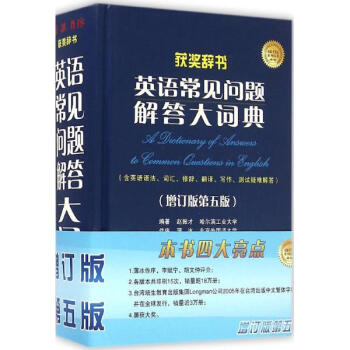




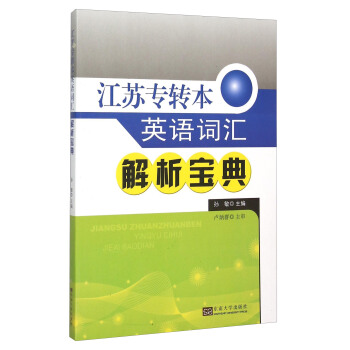
![英语语法实践指南(第十版)/21世纪中学生英语文库 [A guide to English Grammar for Middle School Students] pdf epub mobi 电子书 下载](https://pic.tinynews.org/12323968/5abc5652N252ce4a8.jpg)

